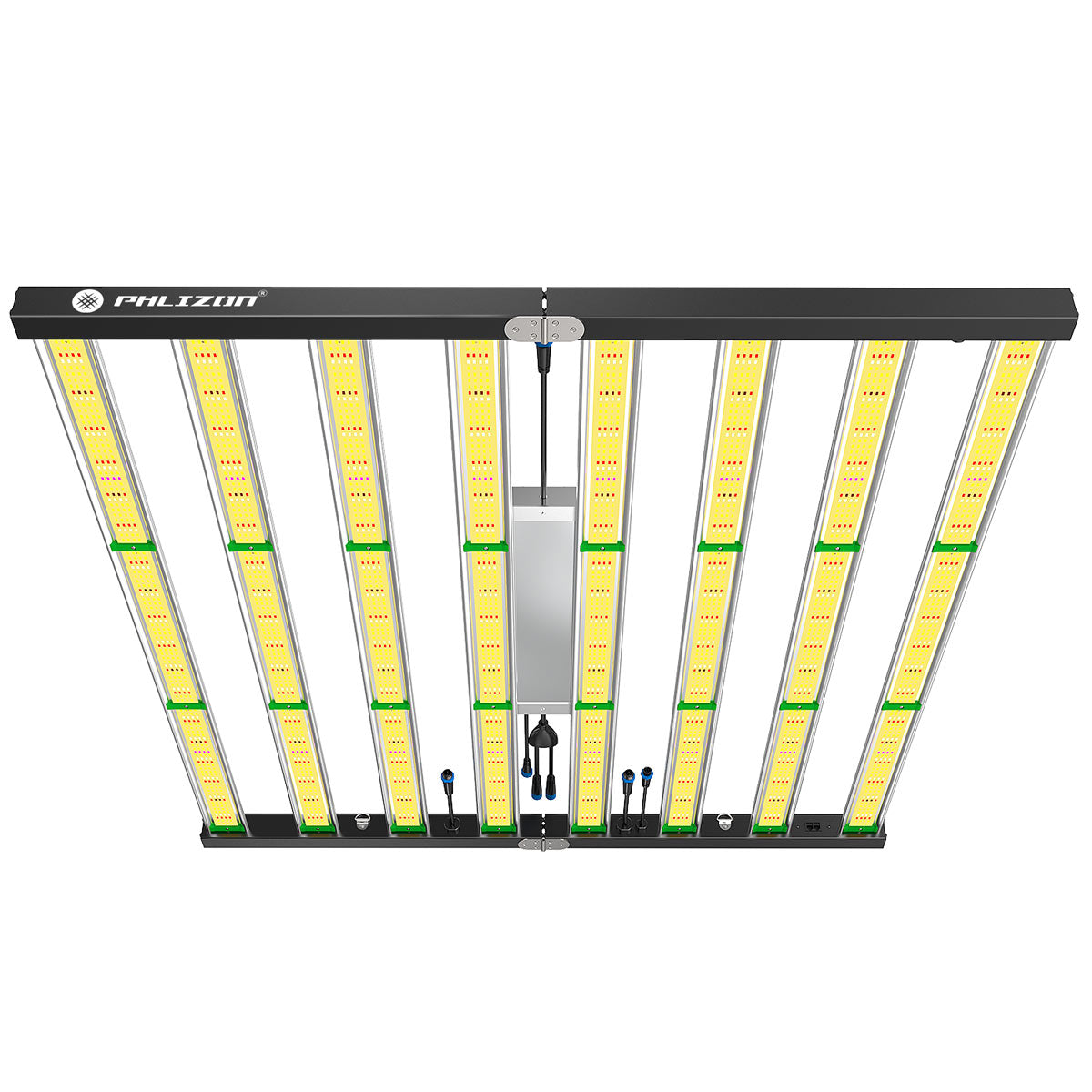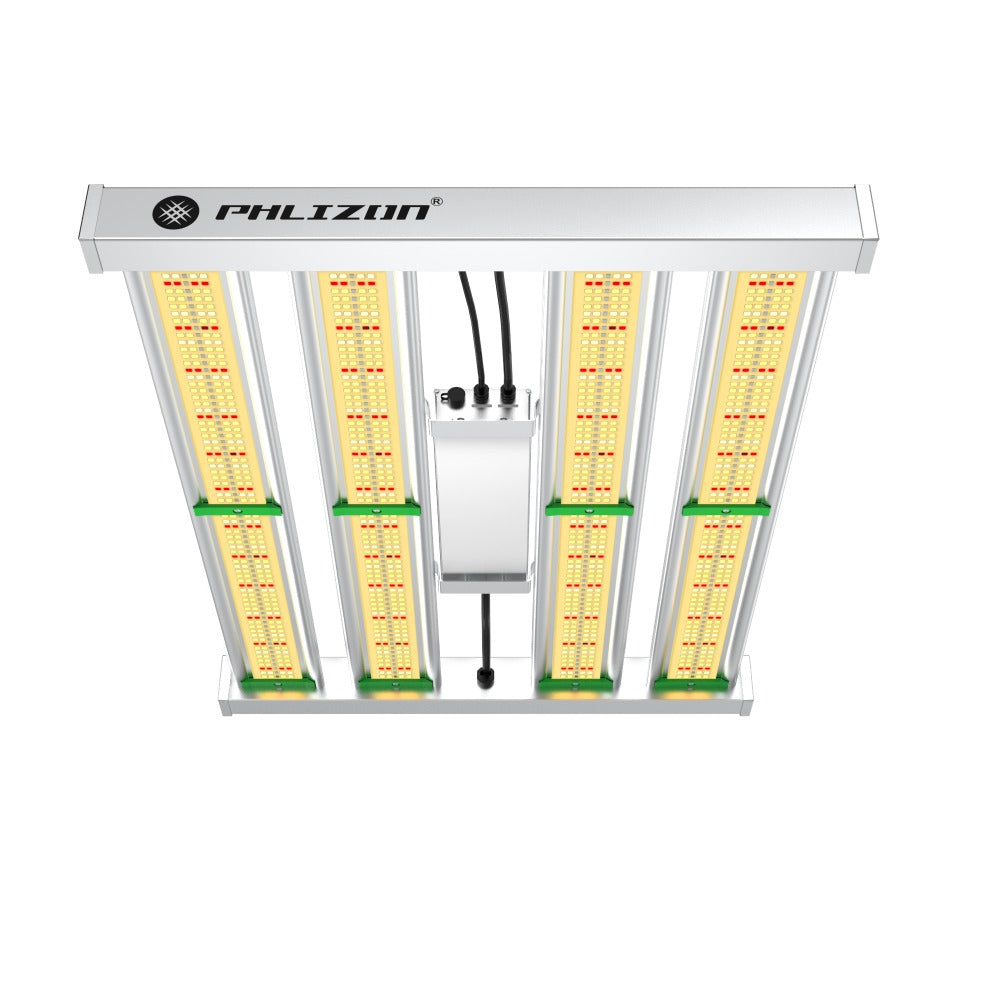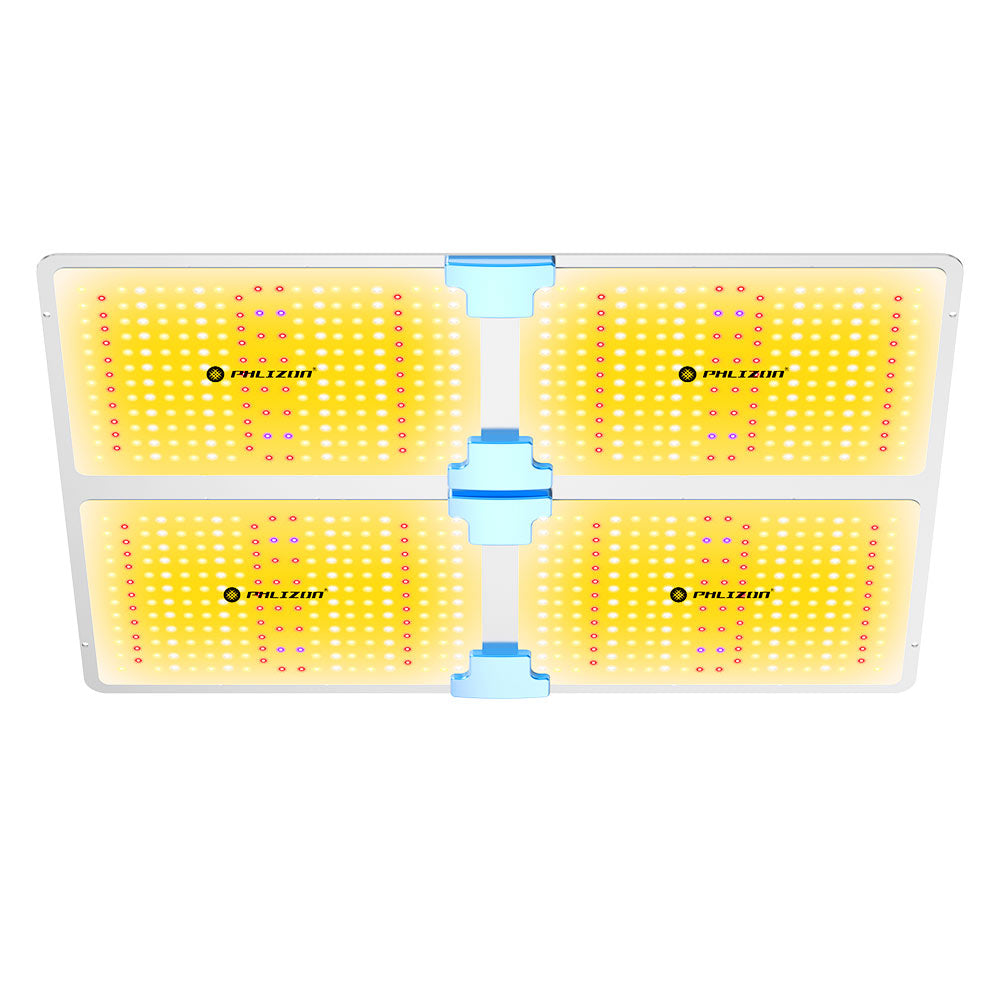Menu
What is the Best LED Light Spectrum for Plant Growth?
Light is made up of photons at different wavelengths. When these wavelengths are combined with photons at each wavelength, it is known as the light spectrum. Since plants are covered with photoreceptors, they pick up light signals with them and use the spectrum of light received for the needed growth stage.
The LED lights have become a vital tool in aiding plant growth because there are full spectrum led grow lights which aid healthy and bountiful plants. The full spectrum grow light provide an optimal spectrum of light that allows users to cultivate their plants all year round.
Understanding Light Spectrum
Light spectrum, as mentioned above, is the range of mixed wavelengths of electromagnetic rays, including the visible and the invisible light. This spectrum ranges from the shortest wavelength with the highest energy, Gamma rays, and the longest wavelength with the lowest energy, Radio wave.
The visible part of this spectrum, the light spectrum, ranges from about 380 to 750 nanometers in wavelength, commonly referred to as wavelength. There is also the ultraviolet (UV) and infrared (IR) radiation that are not visible but have been found to be important to plants as well.
The different wavelengths of the visible light play different roles in the plant growth. Ranging from photosynthesis, growth, flowering, production of secondary metabolites etc. The importance of each wavelength of the visible light will be discussed in detail later in this article, hold on tight.
When UV light (10 - 400 nm) is used moderately for the right exposure time, it can greatly stimulate the secondary metabolites such as anthocyanins and flavonoids. This protects the plant from UV damages. Phlizon® has worked to provide the uv grow light for this purpose and also quality yield of crops. They have also combined UV with IR light to produce the UV/IR LED grow lights.
The Relationship between Photosynthesis and Light Absorption
During photosynthesis, plants convert carbon dioxide and water to glucose (carbohydrate) and oxygen. This process is possible with the use of light as the energy source. This implies that with light, there is no photosynthesis, and without photosynthesis there's no energy and the plant eventually dies.
For photosynthesis to occur, chlorophyll needs to absorb both the blue- and red-light waves. Other spectrums of light are less useful for photosynthesis due to the large amount of light absorbed in chlorophyll a and chlorophyll b. It is important to note that photosynthesis is more complex than just chlorophyll absorption, just the fundamental principle.
The Use of LED Lights in Plant Cultivation
In plant cultivation, where the visible light spectrum is often used, there are several types that have been brought to the market. There is the fluorescent, incandescent, HID and LED. Although all these types of visible light have their pros and cons, the LED has been proven to have more benefits.
One of the reasons why LED grow lights are widely used is because they are available in different sizes and relatively very easy to install. The full spectrum led grow lights also mimics the natural sunlight. Some LED grow lights full spectrum have additional blue or red lights that are used for specific developments. These additional lights in LEDs make them very useful for different types and stages of plant growth.
When compared to the traditional lighting methods, LED has several benefits. LED lights are more energy efficient, they have a significantly longer lifespan, produce brighter and higher quality of light, the list goes on. Plus traditional light burn seedlings. Even though LED lights cost more than traditional lights, they are more efficient and effective.
What is the Optimal LED Light Spectrum for Plant Growth?
Since sunlight provides a wide range of light, consisting of all spectrum of colours, it is necessary to provide your plant with the essential spectrum of light. This is crucial for the plant to grow optimally.
Knowing the optimal LED light spectrum for your plants is dependent on several circumstances such as the environment (indoor or greenhouse), growth stage, etc. The five spectrum of light, essential to plant growth, the blue, red, green, orange and red light, are explained below.
Blue Light (450-490 nm)
Blue light, approximately 450 - 490 nm is an important spectra short wavelength with high energy. The blue light plays an important role in stem elongation, leaf development, helps plants grow a healthy and strong room and phototropism.
Blue light also promotes stomatal opening, allowing more CO2 to enter the plant’s leaves. It stimulates the chlorophyll pigment absorption which aids photosynthesis. This spectrum of light is essential to the vegetative stage of the plant.
Green Light (495-570 nm)
Green light, approximately 495 - 570 nm is a one of the visible light spectrum of middle wavelength. Although less efficient than the blue and red light, the green light also supports photosynthesis and plays a vital role in several physiological activities.
Green light can enhance development in plants by regulating its architecture, promote flowering and increase biomass accumulation. It also stimulates the production of secondary metabolites that contribute to the plant’s defence mechanisms and its response to stress with potential application in medicine.
Yellow Light (570-590 nm)
Yellow light, approximately 570 - 590 nm, is a part of the visible spectrum of light utilised by plants but it has less effectiveness during photosynthesis. That doesn’t mean it is entirely useless, the green spectrum, when combined with other spectra, can modulate a plant's growth.
For example, the red plus yellow spectrum can promote the photosynthetic pigment in lettuce leaves.
Yellow light can also be important in inducing plant survival during environmental stresses, such as salinity and drought. For instance, yellow light enhances the resistance of tomato plants to high salinity stress.
Orange Light (590-620 nm)
Orange light, approximately 590 - 20 nm, plays an important role in the physiological activities of the plant’s growth. Some studies have established the fact that orange spectrum of light with red and blue light enhances plant height, leaves and freshness of lettuce compared to just red and blue light alone.
Oranges light hasn’t been well researched, however, it is established that when orange light is combined with other spectra of light, it can be a big boost to the plant’s development.
Red Light (620-750 nm)
Red light, approximately 620 - 750 nm is a major drive for growth and photosynthesis in plants.
It is the peak of chlorophyll absorption and facilitates several growth such as leaf, stem and general vegetative growth.
Red light is considered as the most responsive light spectrum for plants. When balanced paired with blue lights, it can prevent overstretching and elongation. Red light enhances flowering in plants, either directly during long days or indirectly during short days.
Customising LED Light Spectrums
There is no perfect spectrum of light ideal for all crops, each species and their varying development stage has different needs of light. With the information above, you can easily combine and adjust each spectrum to fit into the plants needed per time.
With the led grow lights controller, available on Phlizonstore, you can be flexible and provide optimised energy which enhances the crop growth. This customization adapts to different plant species which make it a very important tool.
Conclusion
There is a great deal of science and information you will need to know the ideal LED light for your plant growth. Optimising the light spectrum together, just like replicating the natural sunlight, can increase your plant yield and quality.
At Phlizonstores, we have dimmable LED grow lights developed and designed to give you control on how much light you use on your plants. Phlizon constantly works to optimise the spectrum of our LED grow light, such as the 1000w led grow light.
Featured blog
- Choosing a selection results in a full page refresh.



















